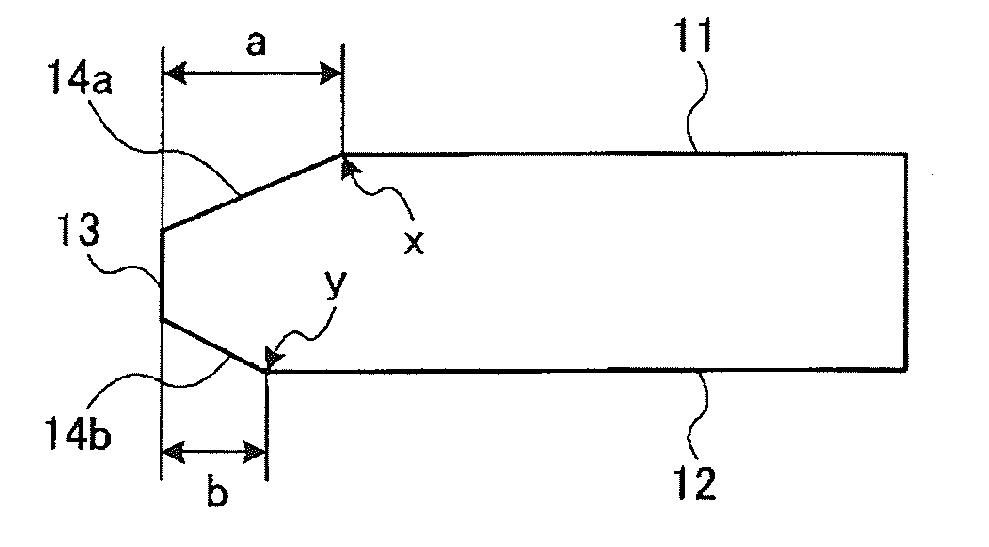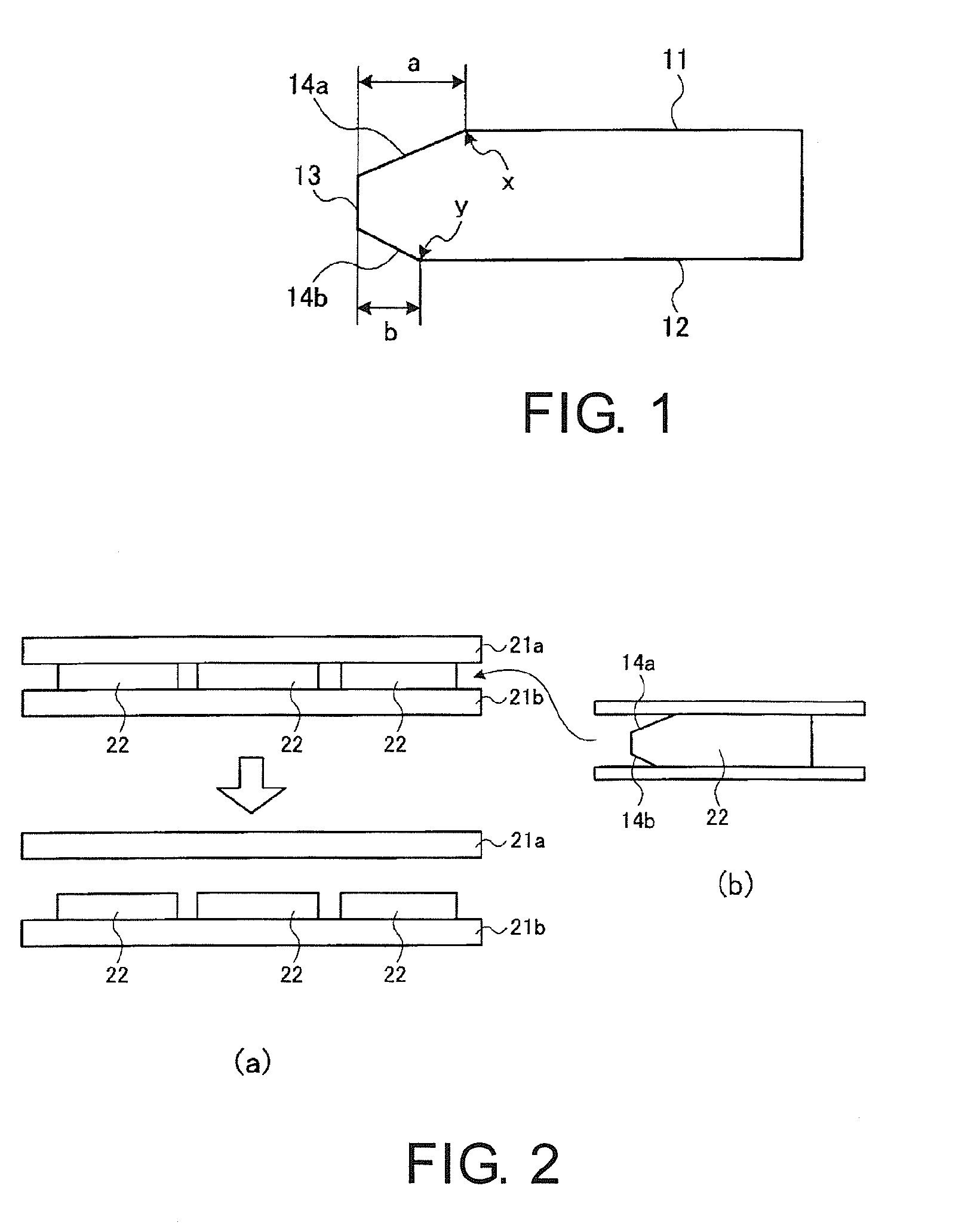Subastrate for a magnetic disk and method of manufacturing the same
a technology of magnetic disk and substrate, which is applied in the direction of manufacturing tools, lapping machines, instruments, etc., can solve the problems of reducing workability and damaging the substrate, and achieve the effect of reducing workability and smoothing the main surface of the substra
- Summary
- Abstract
- Description
- Claims
- Application Information
AI Technical Summary
Benefits of technology
Problems solved by technology
Method used
Image
Examples
example 1
[0046]First, a molten aluminosilicate glass was formed into a disk shape by direct pressing using upper, lower, and drum molds, thereby obtaining an amorphous plate-like glass blank. In this event, the diameter of the blank was 66 mm. Then, first lapping was applied to both main surfaces of the blank, then, using a cylindrical core drill, processing (coring) was carried out to form a hole at a central portion of the blank, thereby obtaining an annular glass substrate having an outer peripheral edge face and an inner peripheral edge face. Then, chamfering (chamfered face forming process) was carried out to form chamfered faces at end portions (outer peripheral end portion and inner peripheral end portion), thereby obtaining a glass substrate with a diameter of 2.5 inches. In this event, the chamfering was carried out so that the chamfered length of the upper main surface was made longer than that of the lower main surface. Specifically, the ratio a / b between the distance a from a bou...
example 2
[0049]First and second polishing processes were applied to glass substrates in the same manner as in Example 1 except that the ratio a / b was set to 2. Polishing was carried out by placing 100 glass substrates in the polishing machine in the state where main surfaces with a longer chamfered length were facing the upper polishing surface plate side. The polishing surface plates were detached after the completion of the polishing and, as a result, the number of the glass substrates adhering to the upper polishing surface plate was zero. The microwaviness of the glass substrates after the polishing was measured in the same manner as in Example 1 and, as a result, it was 1.1 Å and thus was excellent.
example 3
[0050]First and second polishing processes were applied to glass substrates in the same manner as in Example 1, wherein the ratio a / b was set to 1.6 as in Example 1. Polishing was carried out by placing 100 glass substrates in the polishing machine in the state where main surfaces with a longer chamfered length were facing the lower polishing surface plate side. The polishing surface plates were detached after the completion of the polishing and, as a result, the number of the glass substrates adhering to the lower polishing surface plate was zero. The microwaviness of the glass substrates after the polishing was measured in the same manner as in Example 1 and, as a result, it was 1.2 Å and thus was excellent.
PUM
| Property | Measurement | Unit |
|---|---|---|
| distance | aaaaa | aaaaa |
| diameter | aaaaa | aaaaa |
| diameter | aaaaa | aaaaa |
Abstract
Description
Claims
Application Information
 Login to View More
Login to View More - R&D
- Intellectual Property
- Life Sciences
- Materials
- Tech Scout
- Unparalleled Data Quality
- Higher Quality Content
- 60% Fewer Hallucinations
Browse by: Latest US Patents, China's latest patents, Technical Efficacy Thesaurus, Application Domain, Technology Topic, Popular Technical Reports.
© 2025 PatSnap. All rights reserved.Legal|Privacy policy|Modern Slavery Act Transparency Statement|Sitemap|About US| Contact US: help@patsnap.com



